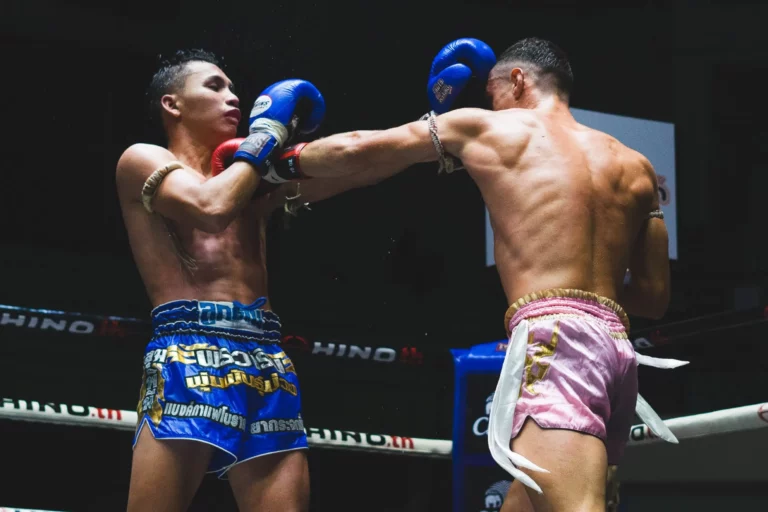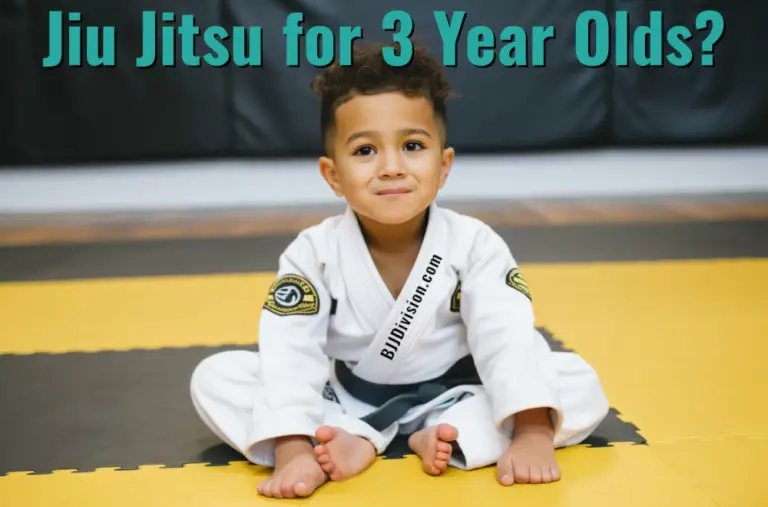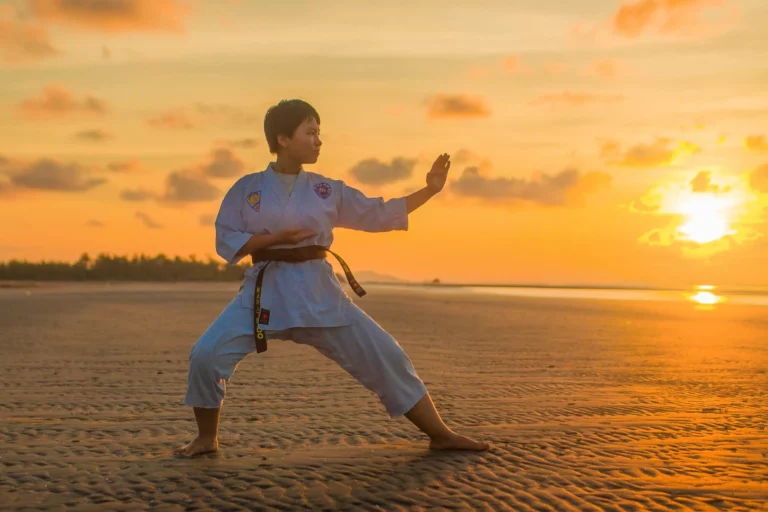Jiu Jitsu for Self Defense: Is it any good?

Jiu Jitsu for Self Defense: Since BJJ originated from Judo it was originally developed for self-defense purposes. This changed, when Brazilian Jiu-Jitsu was used in the early 20th century by the Gracies in “Vale Tudo” fights in Brazil. These fights can be seen as an early version of MMA fights, that have a very open ruleset, where almost everything is allowed. Therefore, Jiu Jitsu was starting to be used as an offensive martial art. Today Jiu Jitsu has become a competitive sport and major part of MMA fighting. Now what about modern Jiu Jitsu? Is Jiu Jitsu good self-defense today?
The short answer: Yes, Jiu Jitsu is still one of the best, if not the best, martial art to learn for self-defense. BJJ enables the smaller and weaker individual to defend themselves against the bigger opponent by utilizing superior angles and levers as well as using their momentum against them. All Jiu Jitsu practitioners start out with learning defensive concepts.
Why is Brazilian Jiu Jitsu good Self Defense?
Jiu Jitsu, just like Judo, started out as a martial art for self-defense. This is what it was made for and many military organizations around the world teach aspects off BJJ for self-defense today. Here’s why:
Positions
Jiu Jitsu starts out with providing a good positional understanding which is the foundation of the art. For example, in a grappling situation one should never expose their back as it is the weakest position to be in. Therefore, the core concepts of Jiu Jitsu are built upon the ideas of moving towards favorable positions, while avoiding damage and identifying opportunities to attack yourself.
Defense first
After a Jiu Jitsu practitioner has gained a basic understanding of positions, he will learn how not to get passed to worse positions and how to defend from inferior positions. This is usually done by setting up a “guard” which means bringing your legs between yourself and your opponent in different ways to control him.
Control
BJJ is all about control. Control is the one tool that allows a practitioner to stay safe in both inferior and superior positions as well as progress to superior positions and finally utilize submission holds.
Focus on technique
Jiu Jitsu’s core concepts don’t revolve around athleticism, speed and being superior in strength. These physical aspects are more important in other grappling sport like Wrestling though. Therefore, BJJ enables weaker individuals to defend themselves by utilizing superior angles, levers, and positioning.
Ground fighting focus
Statistically seen, most real-life fights end up in a grappling scenario and progress to the ground where Jiu Jitsu arguably beats most other martial arts.
Intense training
Jiu Jitsu classes can be repetitive when drilling a technique over and over. Additionally, Jiu Jitsu sparring can be physically and mentally taxing. This is exactly what makes it so effective. Regardless of any specific technique, the intuition, Fight-IQ and toughness gained through many hours of drilling and sparring will be extremely useful in self-defense situations.
Success in MMA
MMA allows many different fighting techniques and comes closest to a non-restricted fighting scenario. Therefore, BJJ’s success in MMA over the last decades proves its effectiveness in unarmed fighting.
In summary, Jiu Jitsu is not the one and only perfect martial art that solves all self-defense problems. Nevertheless, it forms a very good basis for self-defense and can be expanded with additional concepts and techniques. Check out Joe Rogan and Jocko Willink, two of the most influential figures in the fighting space today, discuss BJJ and self-defense:
How to use Brazilian Jiu Jitsu for Self Defense?
In the best case, don’t use it at all. Try to avoid real-life fights as much as possible. They are dangerous and unpredictable. Your opponent might be armed and no matter what some self-defense guru might try to sell you: Your chances of staying safe radically decline if you engage in a fight with an armed opponent. Nevertheless, let’s see what you should do if there’s no way around a fight.
Techniques that work in BJJ for Self Defense
Let’s develop a gameplan for real-life fighting situations. Most of the time, the aggressor will start pushing you or throw punches/kicks. First, you must protect yourself from incoming strikes. Therefore, you should stay out of range and wait for the right moment to engage. Let’s consider two reasonable options you have as someone who knows Jiu Jitsu. You should always aim for the first one if necessary as it is much safer and easier to do:
Arm Drag to Back Control
- Get a controlling hold of your opponent’s same side arm at the wrist (maybe after you dodged a punch).
- Use your other hand to grab your opponent’s triceps from the inside of his arm and drag him across yourself. In case you are significantly smaller than your opponent, you might have problems moving him, so you will have to move past him by yourself. This way you can establish control of your opponent’s back which is the safest position to be in.
- You can work attacks like the rear naked choke if you need to put your opponent out without causing permanent damage. The following video shows exactly this sequence:
Leg based Takedowns
First, you must get a hold of a leg. Aggressors that have no experience in martial arts often overextend themselves. They often lose balance after throwing a wild punch which makes it necessary for them take a big step forward. In this case it will be easy for you to get a hold of the leg. You also might be able to catch a kick.
Second, make sure to place your head towards their chest and stay upright to avoid getting guillotined and always keep moving. Last, take the opponent down which can be done in different ways.
At last, you can either disengage or establish a dominant top position.
You could also rush in for a double leg takedown which will usually be fast and catch your opponent by surprise. Keep in mind, leg-based takedowns are much more dangerous and require more practice to work safely in self-defense scenarios.
If you want to explore a few more concepts for BJJ Self Defense, check out this video:
Techniques that don’t work in BJJ for Self Defense
Keep in mind, you can use Jiu Jitsu as self-defense, but it evolved to a competitive sport that is held under various rulesets today. Not all techniques used in competitive Jiu Jitsu or MMA fighting are applicable to self-defense situations since they don’t have restrictive and protective rulesets.
For example, “pulling guard”, which means dragging your opponent down into your guard to control him with your legs, is a bad idea in many self-defense situations. Under most Jiu Jitsu rulesets one is not allowed to use any kind of striking, therefore pulling guard is a legitimate way of fighting. This is not the case in real-life fighting situations. You might get hit in the face when trying to play guard.
How long do I have to train Jiu Jitsu for Self Defense?
Let’s not sugar-coat it: Even with Jiu Jitsu working extremely well for self-defense, you cannot expect to take a weekend seminar and be able to fight anyone anywhere. As stated before, Jiu Jitsu benefits from drilling, repetition and learning to apply techniques through sparring. You must put in the blood, sweat and tears to get the most out of it. If you do so, you will get back much more than the ability to defend yourself.
Generally, after you achieved the rank of blue belt at a legitimate Jiu Jitsu school you should be superior to most unexperienced and unarmed real-life opponents. This usually takes at least one full year of consistent training. Check out our research on How long it takes to get a Blue Belt in BJJ. The harder and more frequently you train, the faster you will be ready.
Competitions can go a long way in preparing you for real fights. Both competitors usually use 100% of their strength, just like in a real fight which might be a life-or-death situation. A seasoned Jiu Jitsu competitor has experienced the intensity of a one-on-one competition fight and will know how to stay calm and composed in a fast-paced and stressful fighting situation. If you mainly practice Jiu Jitsu for self-defense purposes, you will have to make certain adaptions to modern competitive Jiu Jitsu.
When is Jiu Jitsu bad for Self Defense?
Everything we discussed in this article can be applied to one-on-one fighting situations. But what about a more dynamic fighting scenario where many aggressors might be involved?
The concepts of Jiu Jitsu are still valid: Control the opponents and gain superior position. This is easier said than done in a scenario with several attackers. In this case, always try to disengage or de-escalate the situation. As soon as you are on the ground or entangled with your opponent through holds, you lost the ability to disengage. At this point you might get attacked by additional aggressors.
Never compromise your ability to disengage when facing several attackers! Therefore, many Jiu Jitsu techniques become useless in such a scenario.
Best Martial Art for Self Defense
Jiu Jitsu is definitely among the best self-defense martial arts for one-on-one self-defense. For fighting several attackers, a standup focused martial art might work best. Nevertheless, to be a well-rounded fighter you will always have to incorporate aspect of different martial arts.
Wrestling and Judo can improve your takedowns and throws. Boxing, Karate and Muay Thai will improve your striking. Running will improve your ability to disengage. All jokes aside, most martial arts provide effective tools if used in the right context. Full contact martial arts, like Jiu Jitsu, are probably superior since their training process translates better to real fighting.
Jocko Willink, Navy Seal and long-time Jiu Jitsu Black Belt, thinks that grappling is superior in most fighting matchups. Nevertheless, he also advocates to have knowledge in different aspects of fighting, as it usually is a combination of striking and grappling that makes someone dangerous all around. Here’s what he has to say:
We published a few in-depth comparisons of Jiu Jitsu and other popular martial arts, covering aspects like differences and similarities, effectiveness, self-defense, competition, injury-rates, popularity, and culture. Go check them out if you are interested:






